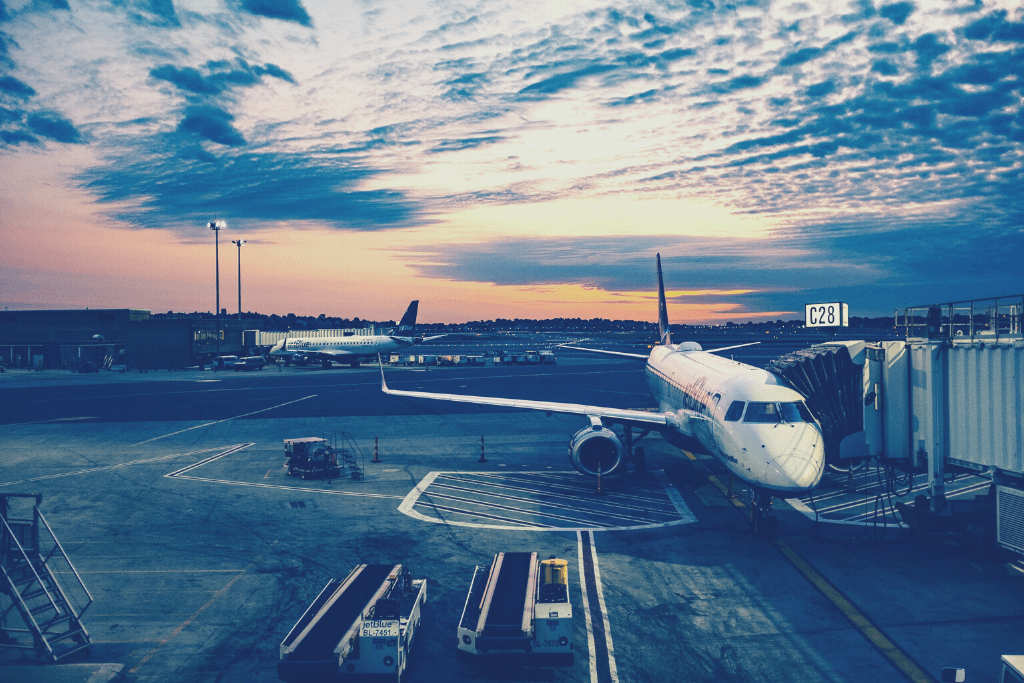There’s no way to sugarcoat the economic devastation the aviation sector has suffered during the pandemic: In 2020, airlines bled a loss of USD 168 billion. For comparison, this was the equivalent of the gross domestic product of the entire country of Greece in the same year.
While uncertainties concerning the COVID-19 pandemic linger, thanks to rising global immunization rates, millions of citizens, particularly in advanced economies, have been able to put travel back on their agenda. This means air travel might be about to have a significant rebound in the summer and coming years: According to the International Air Transport Association, in 2022, there’ll be 150 percent more passengers flying compared to 2021.
While the full recovery is incomplete and uneven, and further hit by the slowing economies, the number of air travelers seems to be rising in most industrialized nations. The growth in demand for flying has been particularly strong in some regions such as the Asia-Pacific, where countries like Japan, Hong Kong, and Taiwan have eased their border rules as of late 2022. Therefore, the following are the key trends that define the air travel industry.
1. Personalized Air Travel

Thanks to the rapid advancements in digitization, personalization has been a prominent trend in many consumer industries, and air travel is no exception.
“Passengers expect a tailored and personalized buying experience, similar to their online experience with major retailers,” said Allison O’Neill, VP of Passenger Services at SITA, an IT provider for the air transport industry, speaking with Skift.
Personalization, which entails anything from smart deals to destination-based content, or the ability for passengers to go through the security and board their planes using advanced access solutions, will be the key to driving loyalty and customer satisfaction in post-pandemic air travel.
2. Touch-Free Airport Infrastructure

“I don’t think we should ever shake hands ever again, to be honest with you,” said Dr. Anthony Fauci, the White House immunologist, capturing the essence of a significant cultural transformation brought upon by the pandemic, during a Wall Street Journal podcast.
With the heightened public sensitivity and awareness of the importance of hand hygiene, the demand for touch-free products such as payment solutions, automatic doors, or electronic dispensers has never been higher.
It’s possible to see the rise of this trend in future-forward airports through the increasing number of face-recognition applications, hands-free access and security solutions, and digital-first travel experiences.
Furthermore, particularly given the potential staff shortages following the air travel rebound, these digital and touch-free access solutions help to optimize the passenger flow, while saving time and money for airports.
3. Business Travel Slower to Bounce Back

While in-person meetings are back on the agenda again, business travel might be the last sector to fully recover from the pandemic, according to the International Air Transport Association.
In an effort to benefit the bottom lines, save time, and achieve their sustainability goals, an unprecedented number of companies are turning to video-conferencing tools instead of setting up costly events and conferences.
In September 2021, a Bloomberg survey of 45 large companies worldwide revealed that 84 percent of them plan to spend less on business travel in the post-pandemic era.
4. Work, Play, Stay: Hybrid Travel to Take Off

Due to the decline of business travel, millions of in-person meetings might’ve been permanently ditched. Still, a new travel segment is on the rise: Thanks to the increase in remote work, an accelerating number of executives can take multi-purpose trips.
“Business or pleasure?” is a question that no longer has a straightforward answer in the era of post-pandemic air travel.
Unlike the typical business travelers, who tend to take a short and hectic trip for work and have to be back at the office on Monday, hybrid travelers have the luxury of flexibility. Therefore, they favor longer and slower travel and combine personal and professional interests in their destinations, causing a shift in the culture of work travel.
5. Eco-Conscious Travel is the New Norm

Aviation is the most carbon-intensive form of transport. Even though only 3 percent of the world’s population flies regularly, aviation is responsible for about 5 percent of climate change. Nevertheless, in recent years, both consumers and air travel executives have been experiencing a reckoning about the heavy ecological burden of flying.
“I don’t know a single CEO who believes that sustainability is not coming back to the agenda as a critical topic,” said Alex Dichter, Senior Partner at McKinsey specializing in aviation, in an episode of The McKinsey Podcast.
Due to the pandemic, air travel stopped for a while, adds Dichter, but luckily, this hasn’t stopped the sustainability innovation: “The good news is that those who are working on technology innovation—the development of sustainable aviation fuels, the use of hydrogen, electrification, and such—have been working around the clock and haven’t taken any time off.”
Given the surge in consumer demand and sectoral awareness, the aviation industry is poised to brim with greener products and services.






